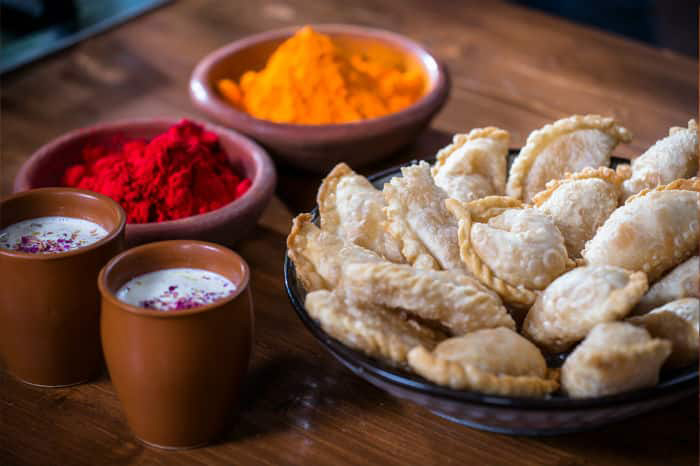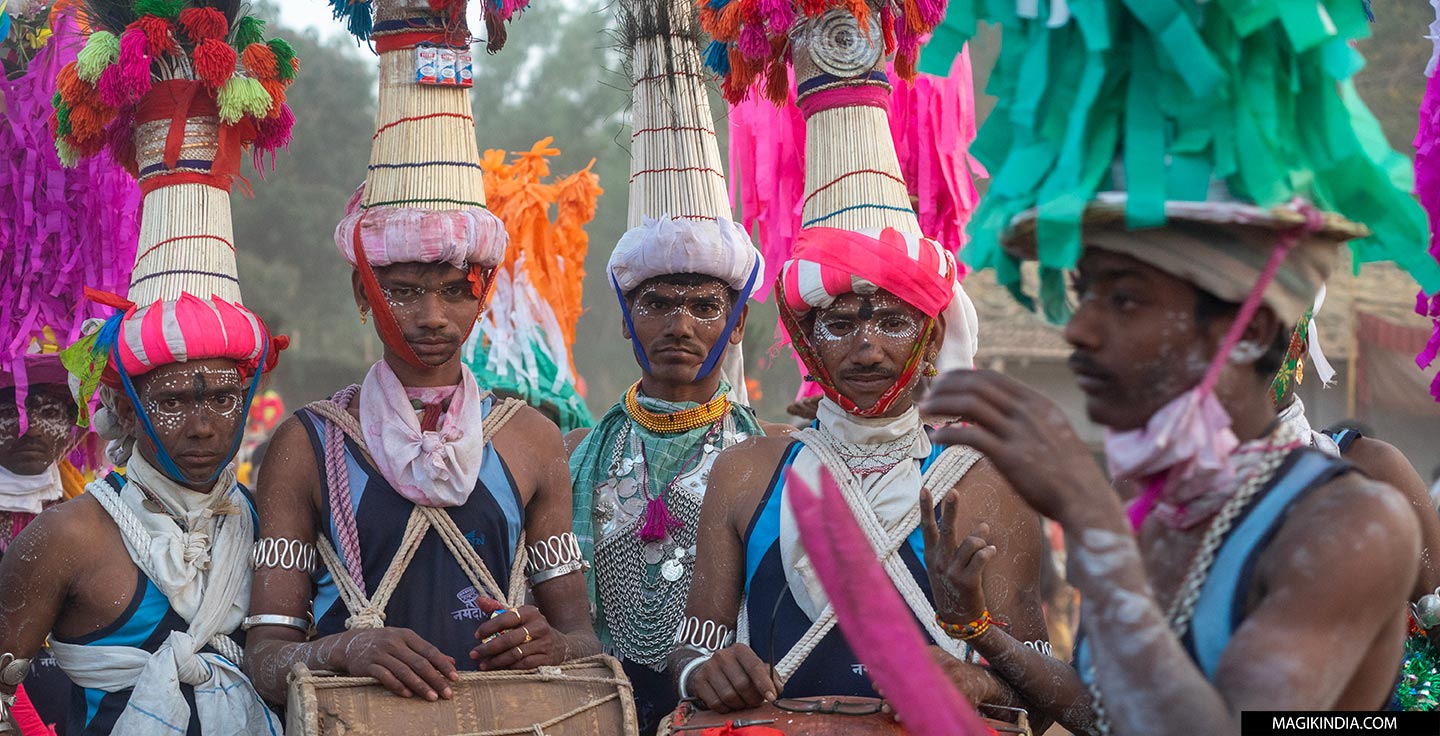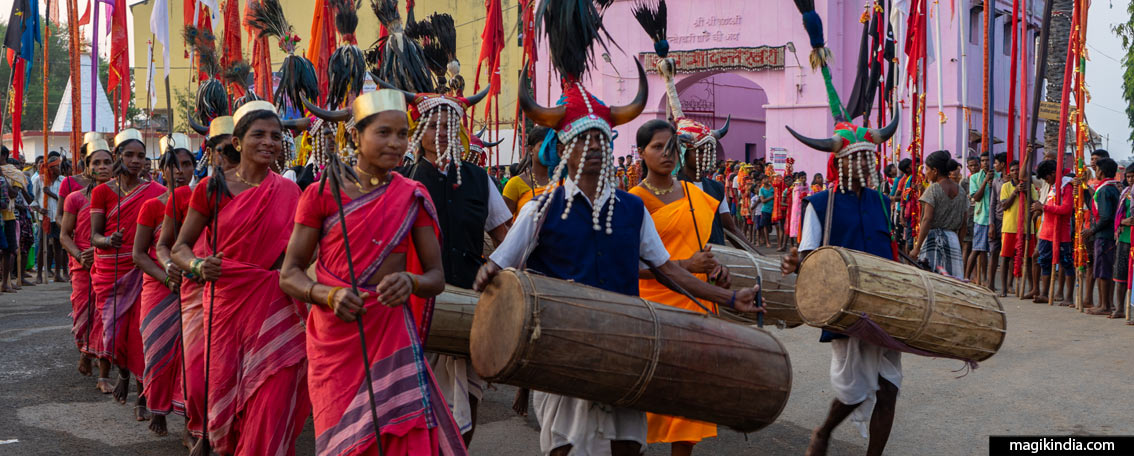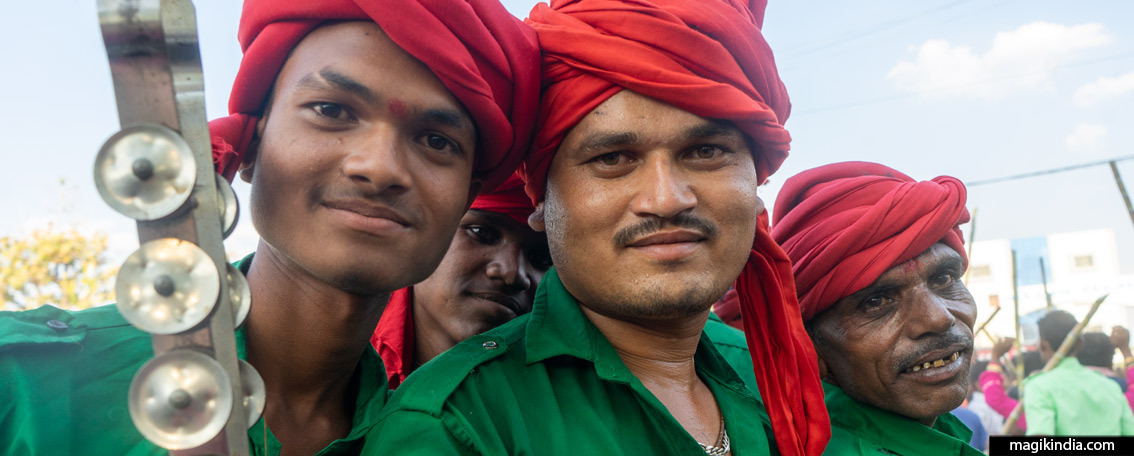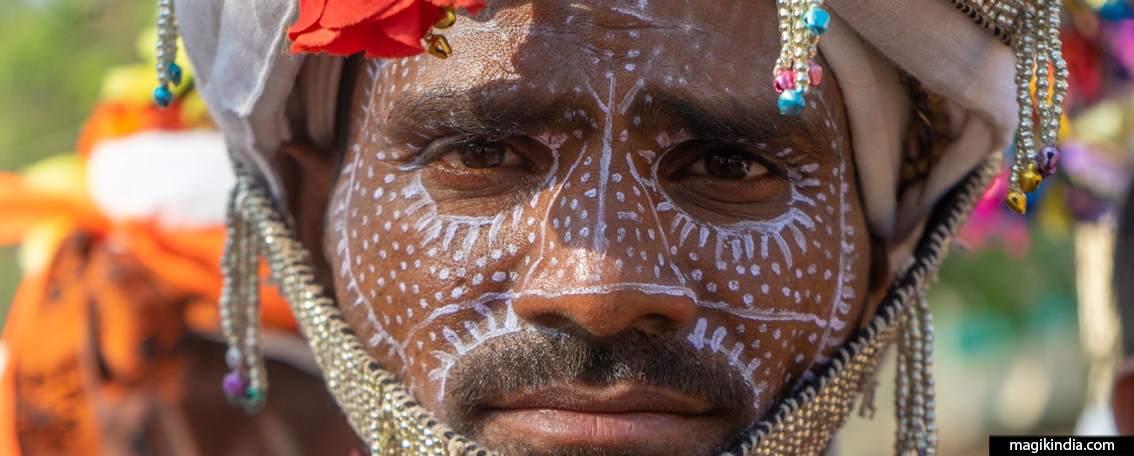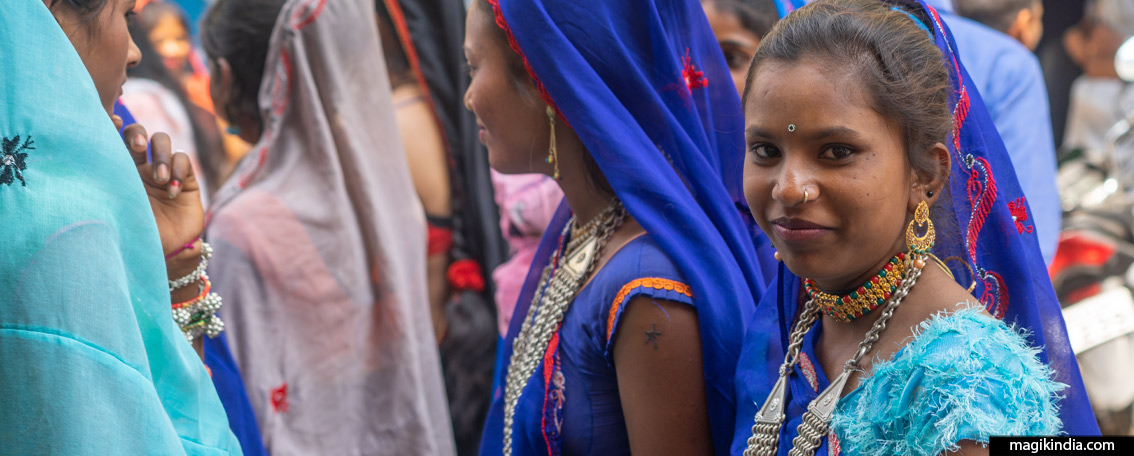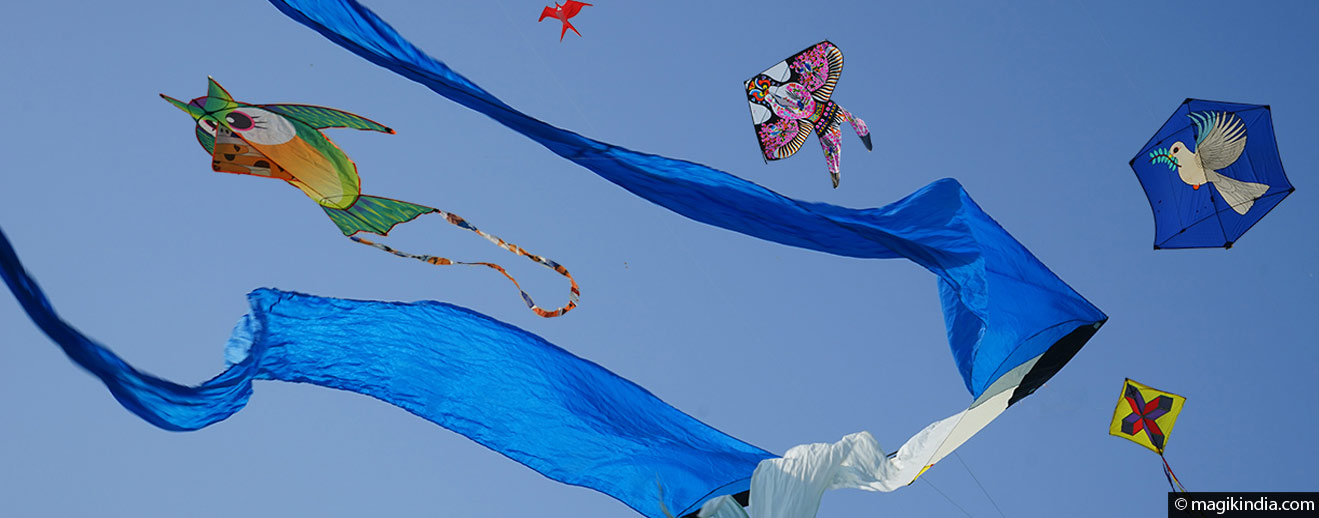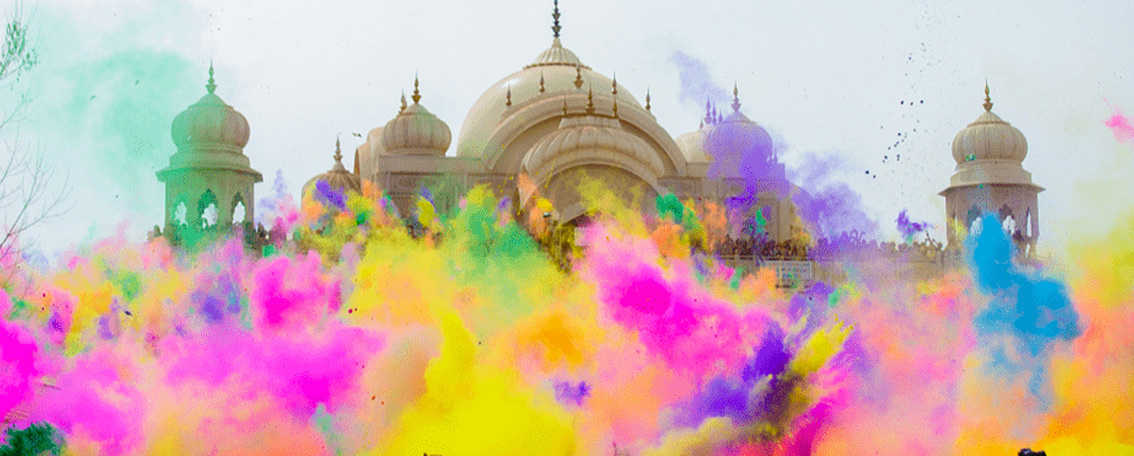
The meaning of Holi, India’s festival of colours
Holi, the Festival of Colours, is surely India’s most iconic festival and it has become so popular that it has spread to many places around the world. But in cities such as London, Paris and New York, do we know why Holi was originally celebrated?
Holi and its spiritual symbolism
The festival of colours is linked to a legend, that of Hiranyakashipu, a demon king and his sister “Holika” from whom the festival takes its name. Hiranyakasipu had obtained a power which made him indestructible and he considered himself to be the supreme God. However, his own son Prahlada refused to worship him as such, as he was a staunch devotee of the god Vishnu.
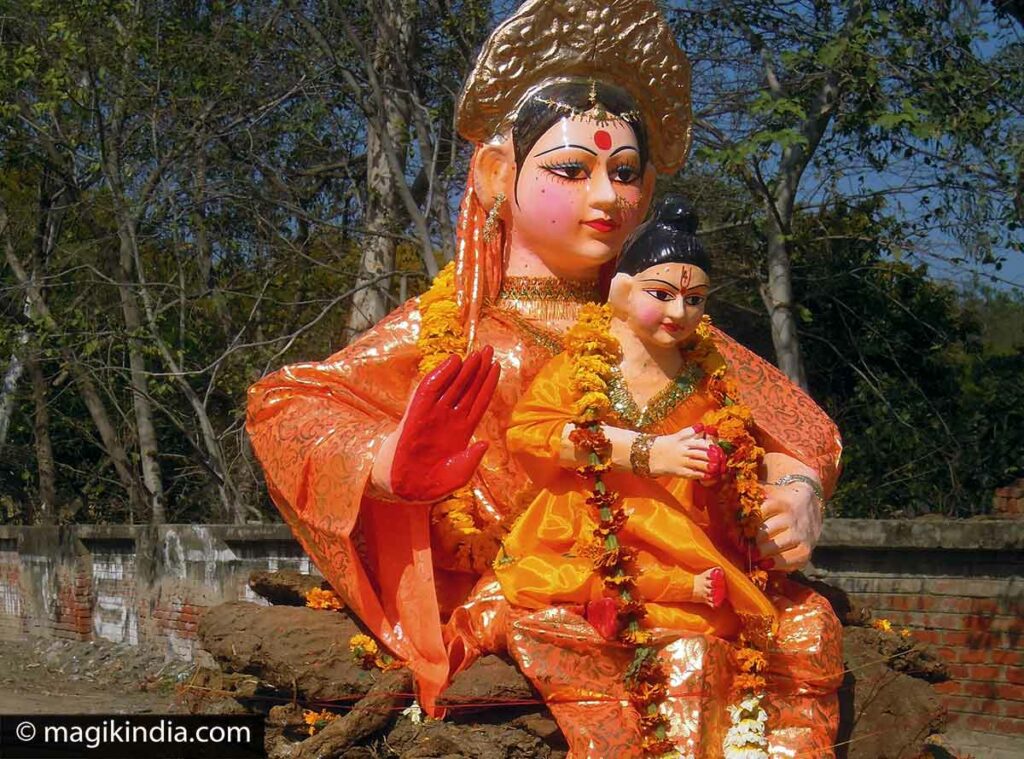
This infuriated the king so much that he decided to murder his own son. However, all his attempts to kill him failed. The king then asked his sister Holika to take care of it. She had obtained from the gods a power that made her invulnerable to fire. She then lit a pyre and sat on it with Prahalad on her lap. But Prahalad’s great devotion to the god Vishnu saved him from the flames as Holika was reduced to ashes.
Holi is therefore considered, in its spiritual sense, as a festival that celebrates the victory of good over evil, of the power of truth over darkness.
KNOW MORE ABOUT HOLIA wellness festival
A chromotherapy
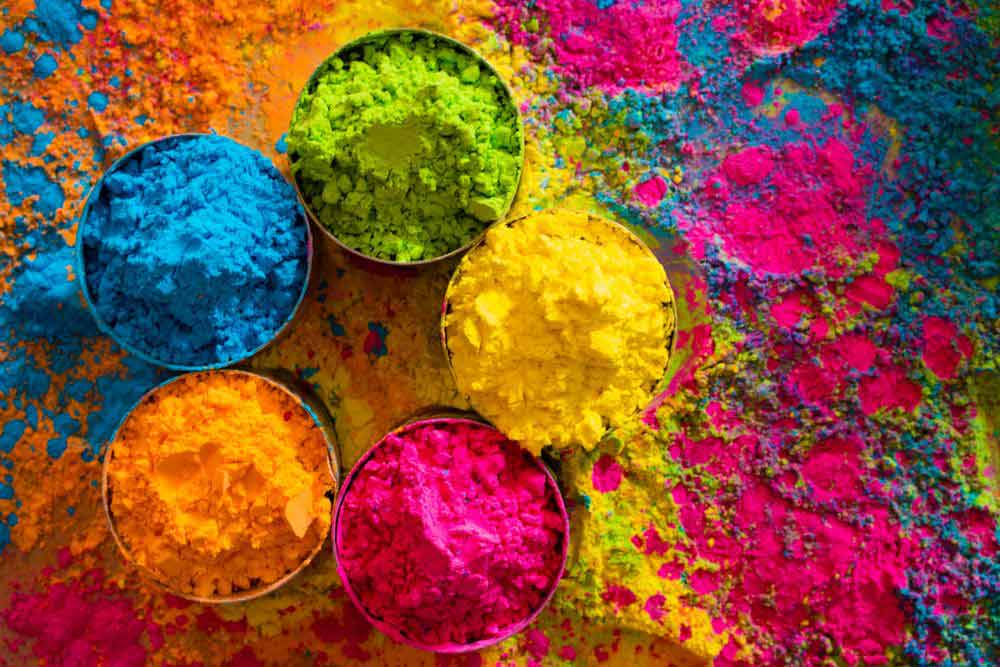
Holi is an explosion of colour. It is known that each colour has its own wavelength which comes into contact with our vibrational body creating chemical messages which are transmitted to the brain.
Thus, researchers have demonstrated that the parasympathetic nervous system (regeneration of the body) is stimulated by cold colours and that certain warm colours increase attention or heighten emotions.
Scientifically proven or not, Holi and its kaleidoscope of vibrant colours has, without a doubt, a very positive effect on the mood of celebrants!
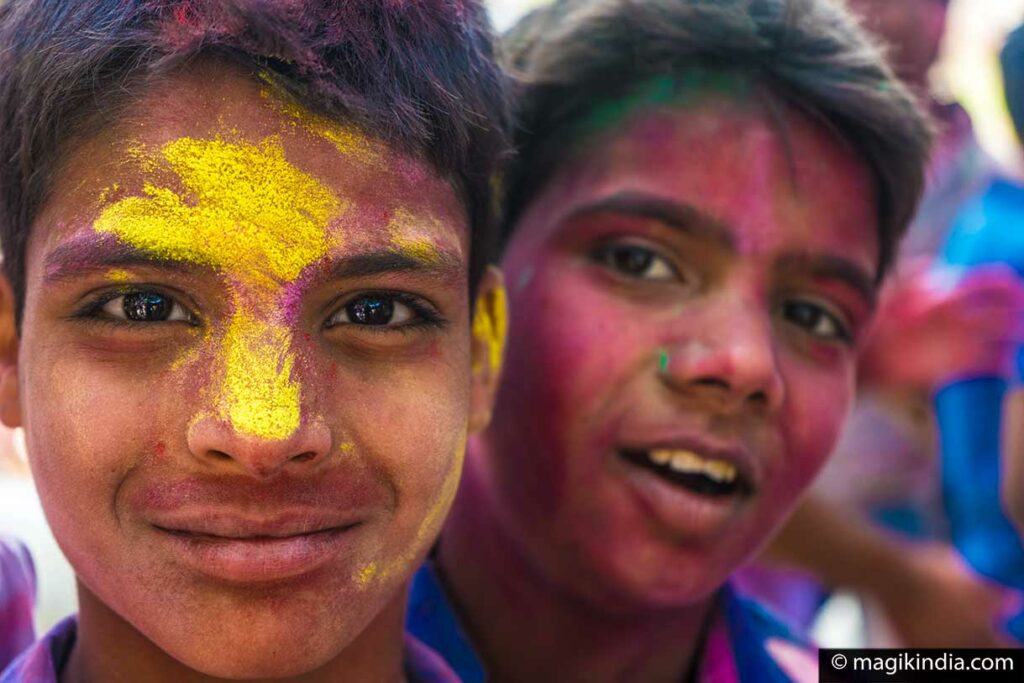
Powders as natural remedies
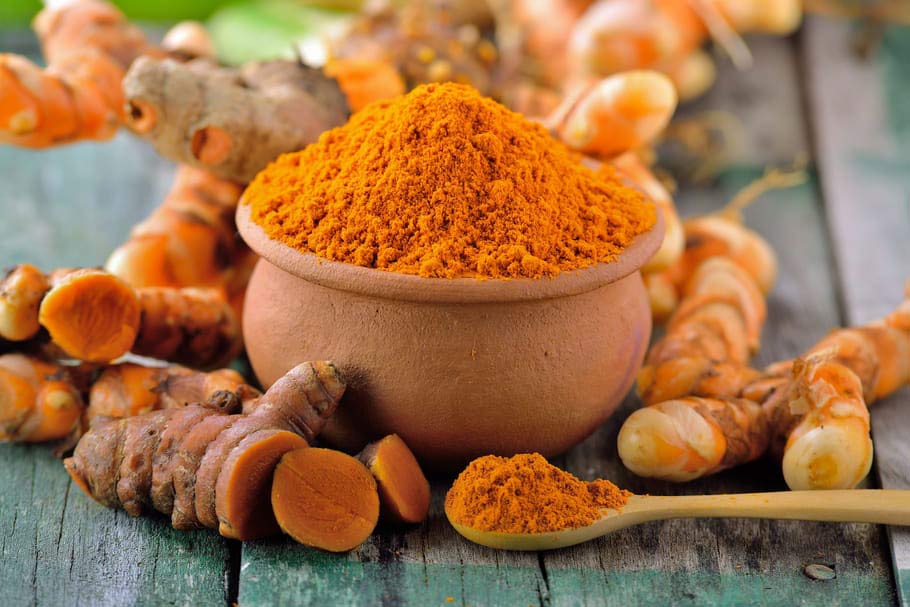
Originally, natural pigments were used in the preparation of Holi powders. They were made from flowers, spices and herbs as well as other substances found in the Ayurvedic pharmacopoeia, the traditional Indian medicine.
Thus, the ocher colour was made using turmeric root known to improve the immune system and calm inflammation.
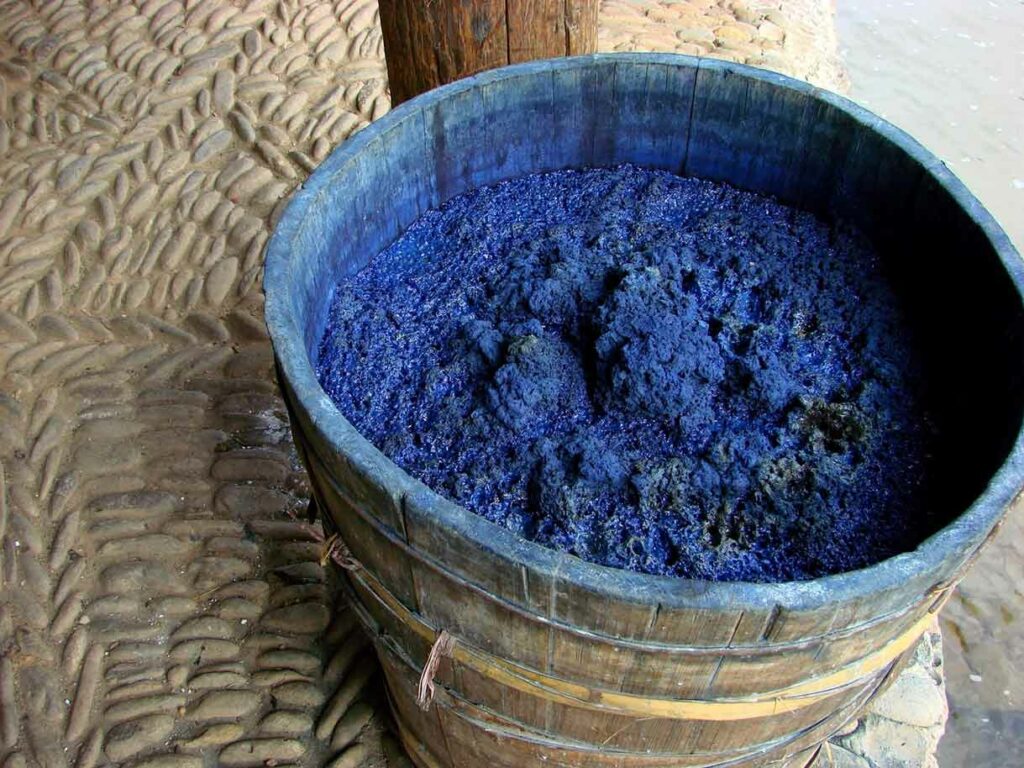
Holi is a festival that celebrates spring. The change of season is conducive to sicknesses like flue or cold and is when these medicinal powders were utilised for preventive and curative purposes.
Very few natural powders are used today. For convenience and cost the Indians prefer chemical powders which can irritate the skin. iFor this reason it is advisable to protect yourself properly. Wear glasses and a hat and apply an oil, coconut for example, to the skin and hair.
An emotional release
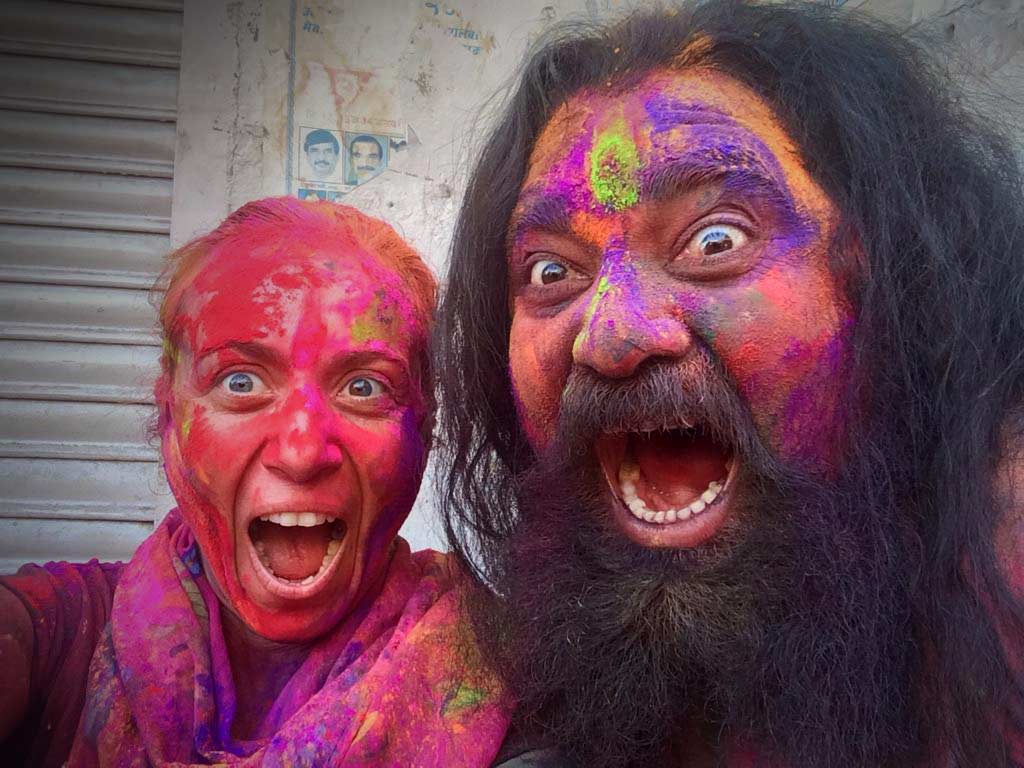
One of the primary purposes of the Holi festival is to let off steam and enjoy yourself to the fullest, to let go completely and lose your inhibitions. Yes, we can shout, dance and sing without any discomfort! A real throwback to childhood!
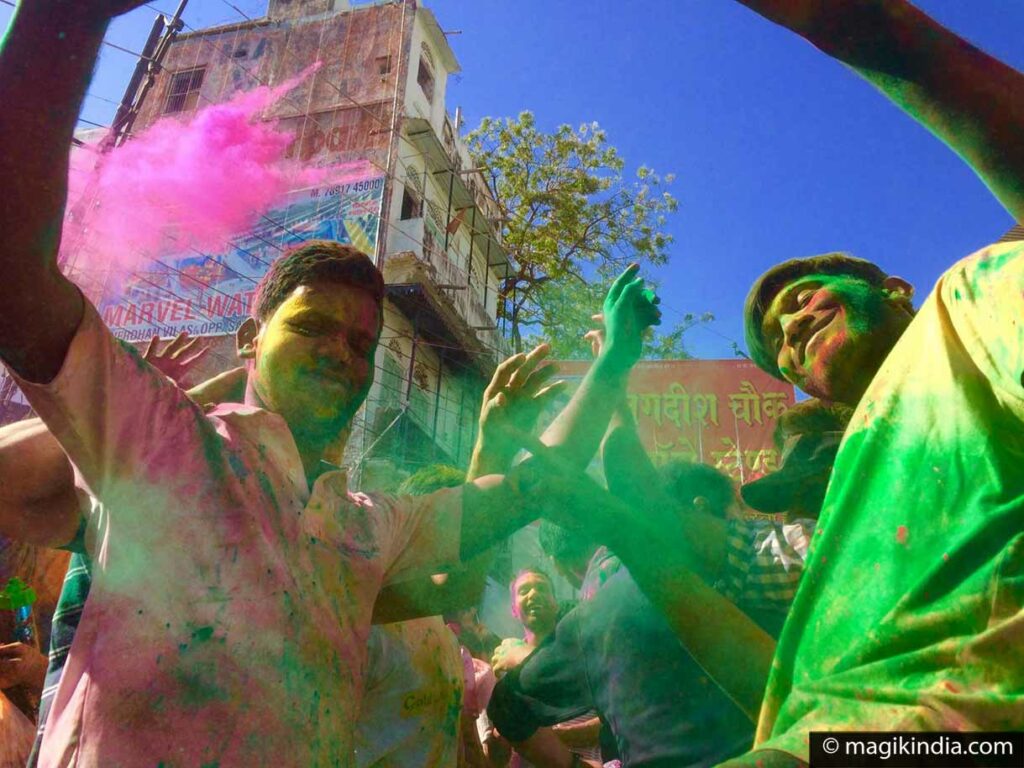
In Barsana, in the state of Uttar Pradesh and in certain villages of Rajasthan, the women push this principle of letting off steam a little further. During the “Lathmar Holi”, they beat the men with long wooden bamboo sticks. A tradition representing an amusing snub to the patriarchal society of India.

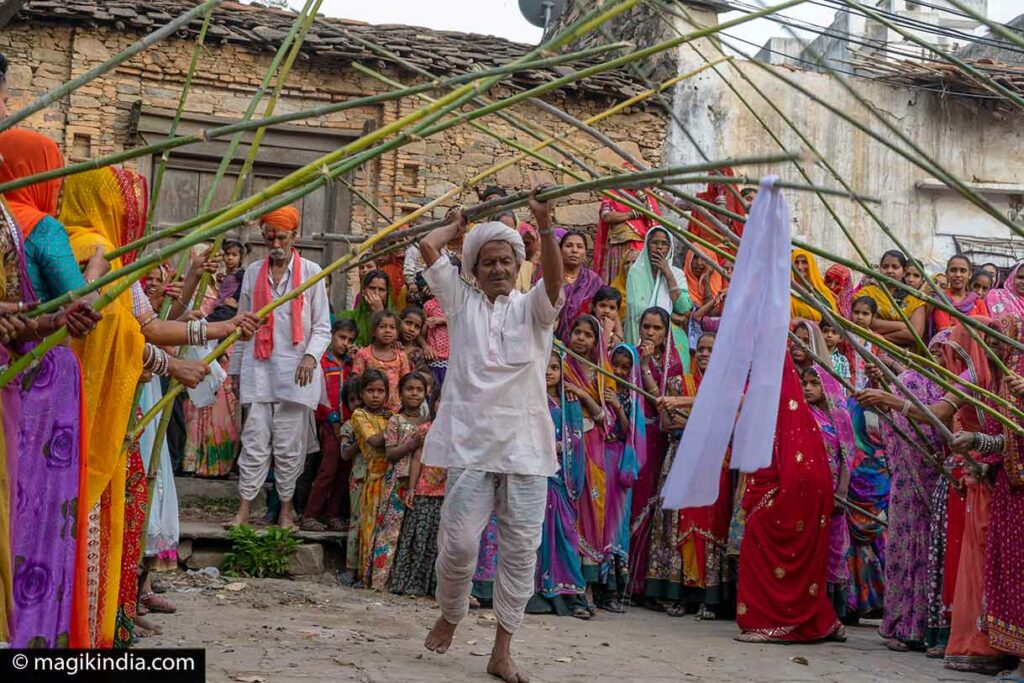
Nowadays, this healthy emotional discharge has, unfortunately, turned into general drinking and it is not recommended to walk the streets of cities during Holi, especially if you are a foreign woman. Therefore, celebrating this festival privately with friends or family is the best alternative.
The small villages and temples, however, are privileged places to celebrate Holi. The atmosphere is good-natured and the inhabitants are always happy to see foreigners arriving there.
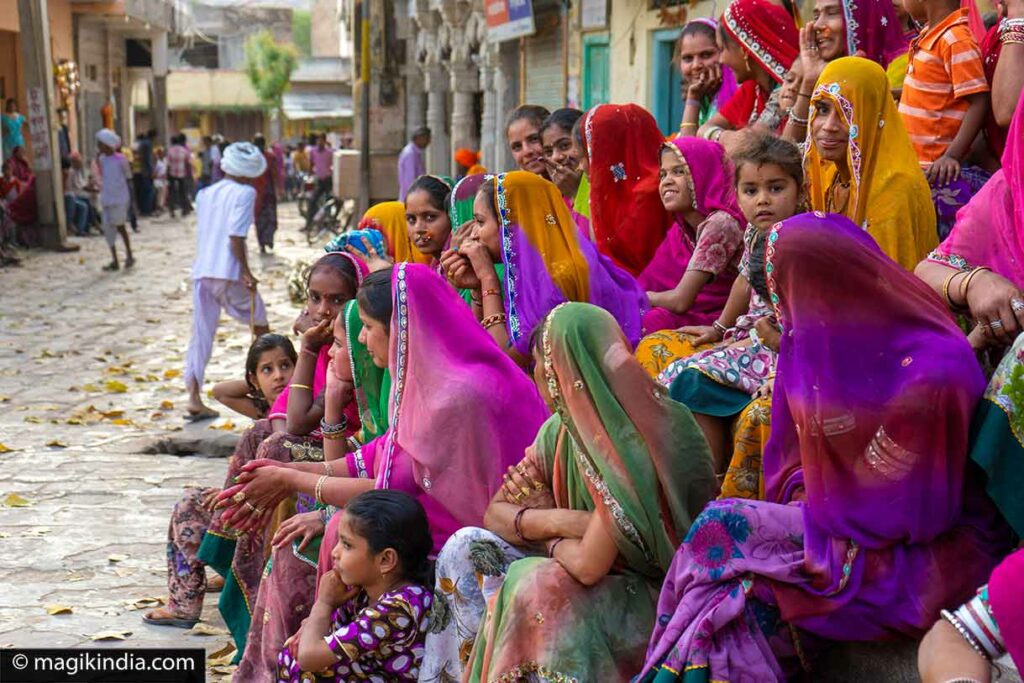
Holi “gives people the same colour”

Although its origins are Hindu, Holi is, in practice, a festival open to everyone. It does not discriminate between religious communities, skin colour, castes, genders and social background. Rich or poor, white or black, woman or man, you will be in the same boat – painted from head to toe!
Say goodbye to your impeccable brushing, neat clothes and radiant skin… During Holi, we no longer worry about looking good.
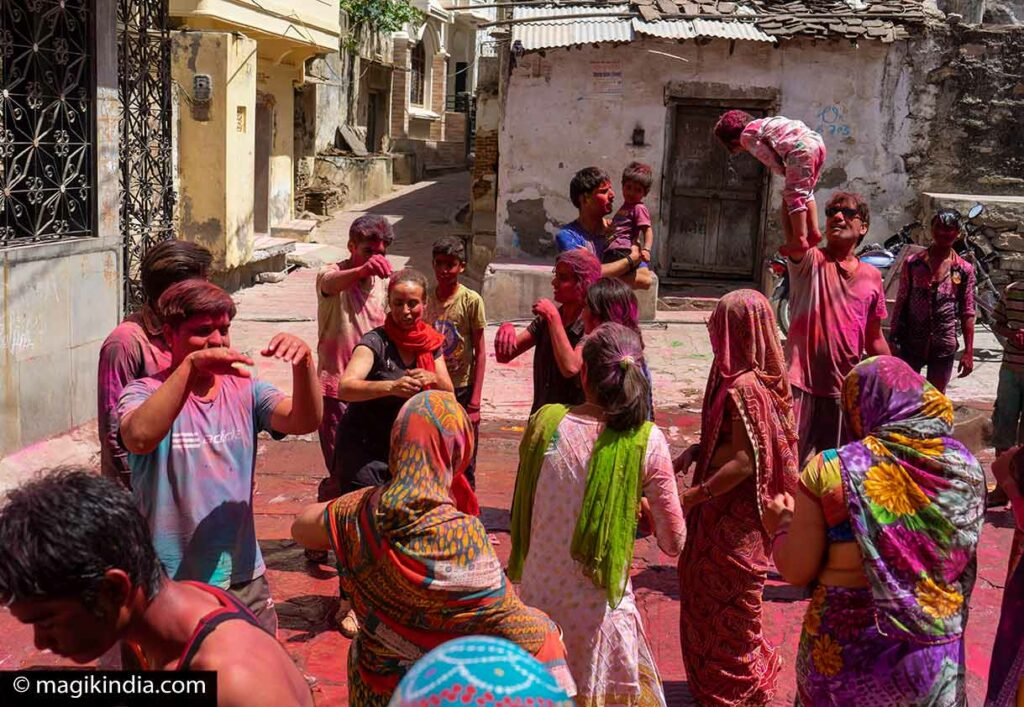
The festival of colours is also a time to put rivalries aside, to make new friendships or to devote oneself to one’s family. It is not uncommon to exchange gifts while munching on a few Gujiyas, a typically seasonal delicacy.
If you want to attend Holi in small villages, contact me!
